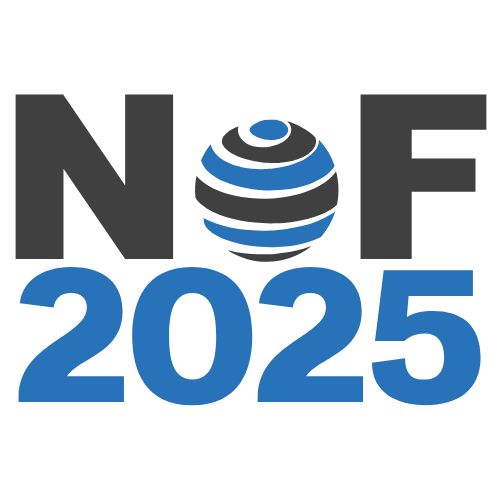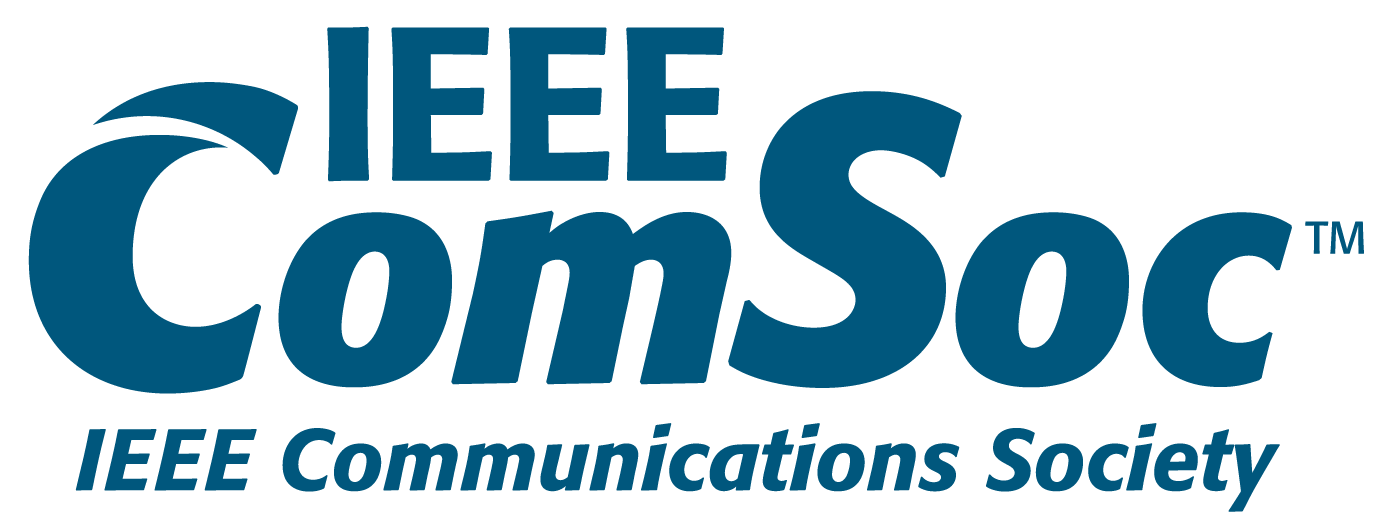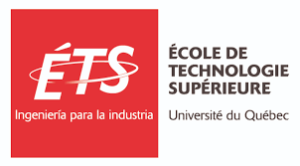NoF 2025 Keynotes
Keynote #1:
Title: Generative AI, LLMs and Multimodal Data in the Next Generation Wireless Networks
Abstract: The next generation of wireless networks will need significant automation and AI capabilities while making use of multimodal data from the network and the environment. The comprehension of such data calls for advanced transformer-based machine learning models. The past three years has been the year of Generative AI, marking a fundamental change in how AI is perceived and used by the public. In this irreversible societal revolution, we have a journey to go from predictive analytics and intelligent control algorithms that allow turning the knobs and optimizing system parameters, towards more capable AI that understand the inherent complexities of the network better than humans do. To this end, reinforcement learning, deep reinforcement learning, transfer learning and many other ML algorithms have shown great success in optimizing network functions, besides being instrumental in providing insights for network operations. In this talk, we will start by providing an overview of the state-of-art machine learning algorithms used in 5G networks and 6G research and continue with the possibilities that come with the availability of multimodal data and Generative AI algorithms that can process this data. We will touch the tip of the iceberg-of-opportunities when Generative AI meets the telecom world.
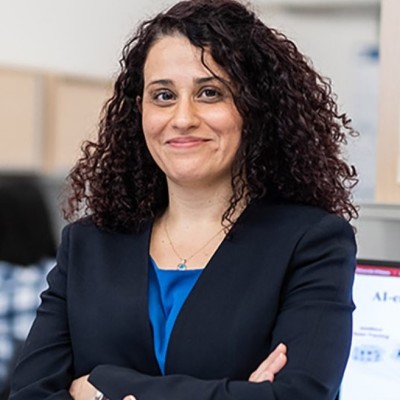
Melike Erol-Kantarci
(University of Ottawa & Ericsson, Canada)
Bio: Melike (Mel) Erol-Kantarci is a highly cited prolific researcher and an influential industry leader in AI in telecom. She is Strategic Product Manager for AI in RAN at Ericsson and Canada Research Chair in AI-enabled Next-Generation Wireless Networks and Full Professor at the University of Ottawa, Canada. Throughout her 15+ years of career in communications, she has received numerous awards and recognitions from technical societies. Dr. Erol-Kantarci is the co-editor of four books on explainable AI, smart grids, smart cities and intelligent transportation. She has over 200+ peer-reviewed publications with citations over 10,000 and h-index 50. She is a sought-after speaker with 80+ keynotes, plenary talks and tutorials around the globe both at industry events and academic conferences. Dr. Erol-Kantarci serves on the editorial board of several IEEE transactions. She has acted as the general chair and the technical program chair for many international conferences and workshops. Currently, she is the Vice-chair of IEEE ComSoc emerging technologies initiative on Machine Learning for Communications. Her main research interests are AI-enabled wireless networks, 5G and 6G wireless communications, smart grid and Internet of Things. She was an IEEE ComSoc Distinguished Lecturer between 2020-2023. She is an IEEE Fellow.
Keynote #2:
Title: Will 6G Deliver True Convergence and Multi-Functionality? Bridging the Gaps to Build the Future
Abstract: The vision of a truly convergent cellular network—one that seamlessly integrates multiple radio access technologies, tiers, domains, and vendor components—has been a guiding aspiration since the early days of 3G. This dream promised a unified architecture capable of delivering unparalleled efficiency, interoperability, and scalability. Yet, despite decades of innovation, progress toward achieving full convergence has been incremental, leaving critical gaps that must be addressed as we move into the era of 6G.
6G is not just about faster speeds or lower latency; it represents a paradigm shift in network design. Beyond connectivity, 6G will embody multi-functionality, converging communications, sensing, and computing into a single, cohesive framework. This convergence will unlock transformative possibilities across industries, enabling smarter cities, autonomous systems, immersive experiences, and more. However, achieving this vision requires overcoming significant challenges, including the coexistence of legacy technologies, the integration of diverse functionalities, and the need for enhanced resiliency in mission-critical applications.
In this keynote, we will explore the current state of the art in network convergence, highlighting areas where progress has been made and identifying the persistent gaps that hinder true integration. We will delve into the technical, operational, and strategic challenges that must be addressed to realize the promise of 6G as a multi-functional, convergent network. From enabling seamless interoperability across legacy and next-generation systems to fostering collaboration between industries and vendors, we will discuss actionable solutions and innovative approaches that can pave the way forward.
The future of 6G lies in its ability to be more than just a network—it must become a platform for transformation, resilience, and innovation. Join us as we chart the path to achieving true convergence and multi-functionality in 6G, unlocking its full potential to redefine connectivity for generations to come.
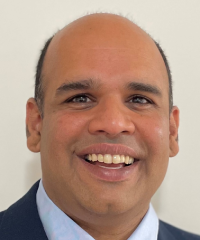
Venki Ramaswamy
(Chief Technologist for NextG MITRE Labs, USA)
Bio: Dr. Venkatesh Ramaswamy is Chief Technologist for NextG at MITRE Labs in Bedford, Massachusetts where he currently leads technical innovation and R&D activities in 5G/xG technologies. He has more than 20 years of experience in the telecommunications industry and has held technical leadership positions at top technology companies, startups, and research labs. Currently he serves as one of the active industry members of the ATIS/Next G Alliance Research Council working on the development of a comprehensive North American 6G strategy. He also an industry researcher at the NSF Edge AI Institute looking at synergies between networking and AI. He has published more than 50 peer-reviewed publications and patents, served as a TPC member for various conferences, and participated in several technical panels. He received his PhD in Electrical Engineering in 2007.
Keynote #3:
Title: Non-Terrestrial Networks: The Last Episode in the Global Technology Race
Abstract: The 6G and beyond networks are expected to adopt an integrated terrestrial and non-terrestrial network (NTN) architecture which will arguably be the most important differentiator of 6G from the first five generations. The NTN expression has been used to refer to almost exclusively the SatCom paradigm until recently. It is now increasingly acknowledged that within NTN, there are separate space (satellite) and near-space (HAPS: high altitude platform station) paradigms with their own special dynamics. The NTN paradigm is not only for connectivity; it also includes computing, edge intelligence, surveillance, security, sensing, monitoring, positioning, localization, navigation, and even more. The humanity will demonstrate its full potential in every dimension (economic prosperity, wellbeing, equal opportunity, environmental, and more), when the communities get ultra-connected with a sustainable, reliable, resilient, intelligent, green/clean/eco-friendly, secure, ubiquitous & affordable, and ultra high-speed “network of networks” with terrestrial (6G and beyond) and non-terrestrial (space and near-space) components. NTN will arguably be one of the most prominent aspects of 6G. This discussion will continue throughout the 2030s as well in the beyond-6G era – exciting times indeed…

Halim Yanikomeroglu
(Chancellor’s Professor | Systems and Computer Engineering Director | Carleton–NTN (Non-Terrestrial Networks) Lab Carleton University, Ottawa, Canada)
Bio: Dr. Halim Yanikomeroglu is a Chancellor’s Professor at Carleton University, Canada, and the Founding Director of Carleton-NTN (Non-Terrestrial Networks) Lab. He is among the handful of academics recognized for substantial and impactful contributions in all three layers of NTN: aerial (UAVs), near-space (high altitude platform stations, HAPS), and space (satellites) networks. He has been among the champions of the UAV base station concept. He coauthored the highest number of papers in literature in HAPS networks. Dr. Yanikomeroglu has led several large-scale and high-profile collaborative research projects with industry (Canadian and international), the Government of Canada agencies, as well as the academic institutions and research centres around the world. His extensive collaboration with industry has resulted in 42 granted patents (several of his IP have been successfully commercialized). He has coauthored a high number of papers in 33 different IEEE journals. He gives around 25 invited seminars, keynotes, panel talks, and tutorials every year. He supervised or hosted in his lab 180 postgraduate researchers. Dr. Yanikomeroglu is a Fellow of several scholarly societies, including IEEE, the Engineering Institute of Canada (EIC), the Canadian Academy of Engineering (CAE), and the Asia-Pacific Artificial Intelligence Association (AAIA); he served as a Distinguished Speaker for the IEEE Communications Society and the IEEE Vehicular Technology Society. He served as the General Chair, Technical Program Chair, and Steering Committee Chair/Member of several major international IEEE conferences as well as in the editorial boards of several IEEE periodicals. He is currently serving in various governance and leadership roles in the IEEE. Dr. Yanikomeroglu received several awards for his research, teaching, and service. He holds a BSc degree in electrical and electronics engineering from the Middle East Technical University, and MASc and PhD degrees in electrical and computer engineering from the University of Toronto.
